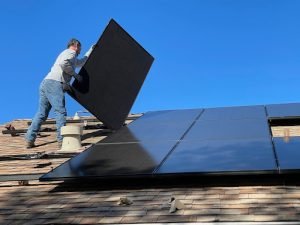Charity begins at home, and so does green improvement. With the ongoing global pandemic, we’ve learned the value of our planet now more than ever. The way we use our natural resources has a major impact worldwide and you can make a drastic impact by starting changes within your home goods.
A few ways to make a home green and energy-efficient are by getting rid of electricity-draining appliances, making arrangements for generating green energy, replacing high-flow elements with low ones, avoiding harmful chemicals, and much more.
Let’s dive deeper into the details for a home green home.
1. Get energy-efficient appliances and lighting

From dishwashers to washing machines, home goods suck up a lot of electricity. And of course, nobody would want a long bill and a negative effect on the planet. Luckily enough, energy-efficient appliances are available in the market and they’re quite affordable too.
In addition to household appliances, and home goods lighting is another issue. Moreover, not all bulbs convert electricity and most of it is dissipated as heat, incandescent ones are a good example. In contrast, LEDs are flexible and will usually make up around 10% to 15% of the total amount on your electricity bill.
2. Green energy

Speaking of electricity, setting up green energy for your home could go a long way. The sun is for everyone, and technology has come far enough to make solar panels readily available. It’s not just sunlight though, you could get wind turbines too. Green energy can be stored and so it’s renewable too, making it all the more effective. Opt for the panels as you could get some of them even within the price range of 100 to 200 USD. It’s the most basic step in green improvement – you will not regret it!
3. Minimize the flow of water
Not only do appliances use up electricity, but many of them can also waste tonnes of water too. The most basic example is that of the flush system which uses up more than 25% of the stored water, usually equivalent to more than 10 liters of water with every flush. So think of substituting it with a dual-flush instead.
Also, consider installing low-flow plumbing systems in the toilet, you could save water from not just the toilet but also the faucets and the shower. On top of that, never leave the water running and use everything at low pressure and intensity to avoid overflow.
4. Recycled glass

The most trending eco-friendly home goods in the market is bio-glass. As the name suggests, it is recycled and looks brand new. On top of that, it also allows natural light to seamlessly enter any space and diffuse. So you can rely on this material for lower electricity bills too as it will cut down your lighting needs during the daytime!
5. Add a green roof to the top of your house

What comes to your mind when you imagine a green roof? Plants no doubt, and that is what it is exactly about. You get to cover the top of your house with greenery. Regardless of the size of your building, green roofs can be installed anywhere.
Another way to make your home and home goods more energy-efficient is to install tiles that have a cooling effect. Using ceramic or metal for roof tiling will help keep the home cool during hot and warm seasons. The color of the material will also have an impact as darker shades tend to take in more heat.
6. Get water filters for the kitchen
Are you in the habit of using too many plastic bottles? Get water filters for your kitchen instead. Plastic waste takes a very long time to decompose – making it detrimental for landfills. With water filters, you get clean and pure water to drink and also don’t need to replace it very often.
7. Stop using unnecessary chemical products

If we begin to take note of the number of chemical products we use daily, we would perhaps lose count.
Not all chemicals are potentially dangerous, but there are some that could harm you and the environment. For instance, formaldehyde could cause skin allergies and even long-term diseases. Below are a few substances that consist of this harmful chemical:
- White spirit
- Wallpaper stripper
- Brick cleaners
Look out for organic products as much as you can. These are low in harmful chemicals and simpler to use.
Conclusion
So making an energy-efficient home is convenient by reducing energy-wasting home goods. Green improvement is highly achievable for anyone, regardless of the size of your home.
READ NEXT: Things to Keep in Mind Before Renovating Your Home
RELATED TOPICS: Home renovation


